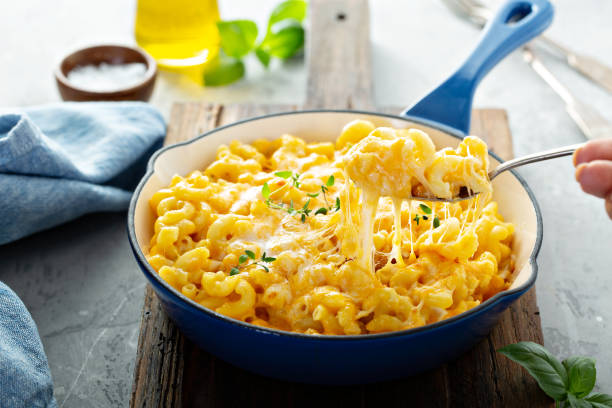You might want to try experimenting with a classic Macaroni and Cheese recipe. After all, who doesn’t love cheese? In this article, I’ll cover the various types of cheese you can use, including Cheddar and Gruyere, as well as evaporated milk and thick versus thin cheese sauce. I’ll also tell you how to make it without a mixer! This recipe is so easy to make that you’ll probably want to try it soon!
Cheddar
A classic macaroni and cheese recipe is one of the most popular meals across Canada. For best results, use a two to three-year-old cheddar cheese. Prepare the pasta according to the package instructions. Meanwhile, melt butter in a large skillet. Add onions and garlic. Sauté for three minutes. Stir in flour and cook for one minute more. Slowly add milk, 1/2 cup at a time, until the mixture thickens and sauce is smooth.
Gruyere
If you’re looking for a delicious and hearty pasta dish, try Ultimate Granny’s Macaroni and Cheese. This recipe is loaded with flavor and can be made with either meat or vegetarian substitutes. For instance, you can add chopped ham or lobster tails, or even chunks of grilled chicken. If you don’t have meat on hand, you can substitute lump crab meat. Vegans and vegetarians can make Ultimate Granny’s Mac and Cheese with plant-based cheeses. Whether you want a delicious meal for a family dinner or an elegant holiday treat, this recipe is sure to please.
Evaporated milk
Evaporated milk is often substituted for fresh milk in mac and cheese recipes. However, this can cause some confusion. There are some ways to make mac and cheese with evaporated milk, and these tips should help you decide which one is best. For starters, evaporated milk is creamier and more concentrated than regular milk. Whole or half-and-half milk can be substituted, but whole milk is recommended. However, if you want a lighter version of the cheese sauce, use 2% milk.
Thick vs thin cheese sauce
To determine how thick to make a cheese sauce for classic macaroni and pasta, try pouring three-quarter cups over the noodles. Observe how long it takes for the sauce to flow to the bottom of the glass. If the sauce takes longer than three minutes to flow, add a little flour and stir it in. It should be the same temperature as the first test.
Roux
The basic thickening agent for macaroni and cheese is roux, made by stirring flour into warmed fat. The ratio of fat to flour is generally one to one. Roux is commonly used to make a wide variety of sauces and soups. The longer a roux is cooked, the nuttier the flavor will be, but the thickening power diminishes as the flavor intensifies. The roux used in classic macaroni and cheese is called a “white roux.” The cheese is gratted into the pan while cooking, so that the roux is light in color and does not have a recognizable raw flour taste.
Nutrition information
If you love the taste and comfort of macaroni and cheese, here’s the nutritional information for this popular classic. Made with semolina wheat flour and egg white, cooked macaroni contains whole milk, salt, and cheese spread. Cheese spread contains milk protein concentrate, whey, and whey protein, and may contain annatto extract, lactic acid, or other additives.

